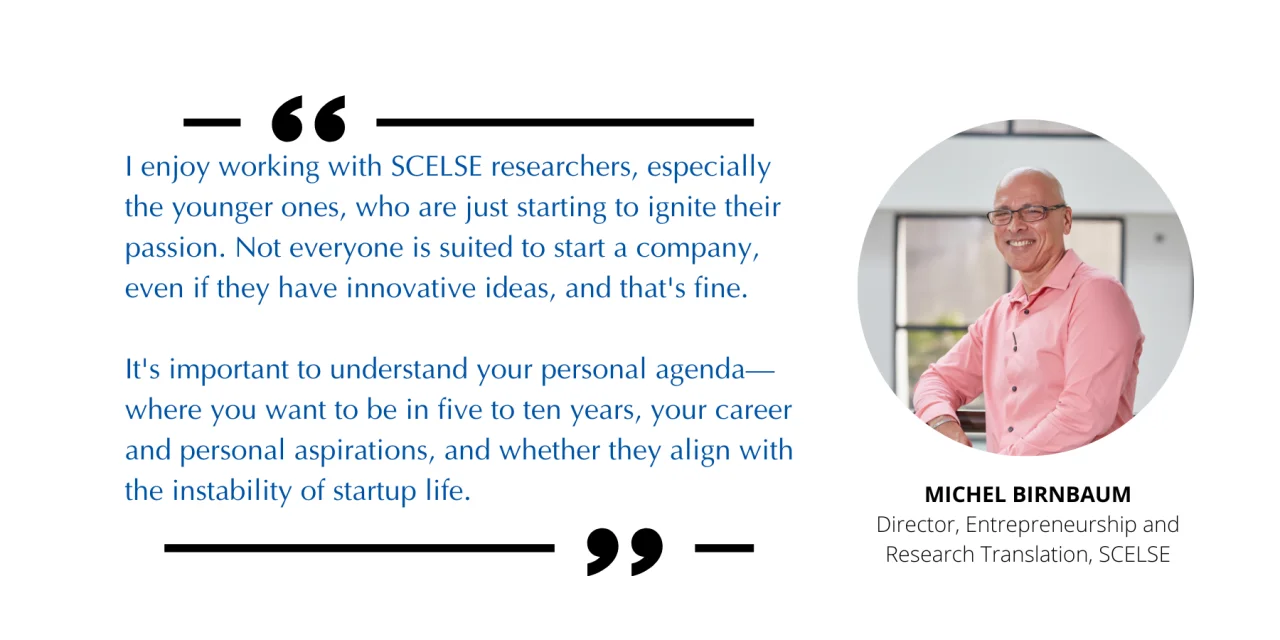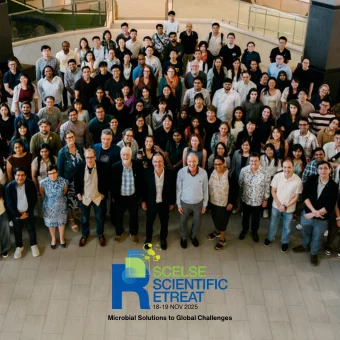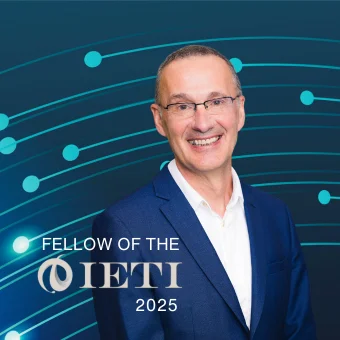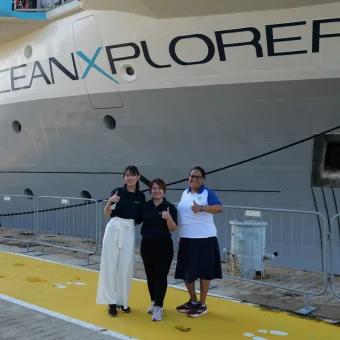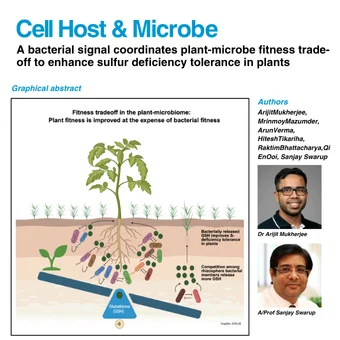From lab to market: SCELSE's Michel Birnbaum on building biotech ventures
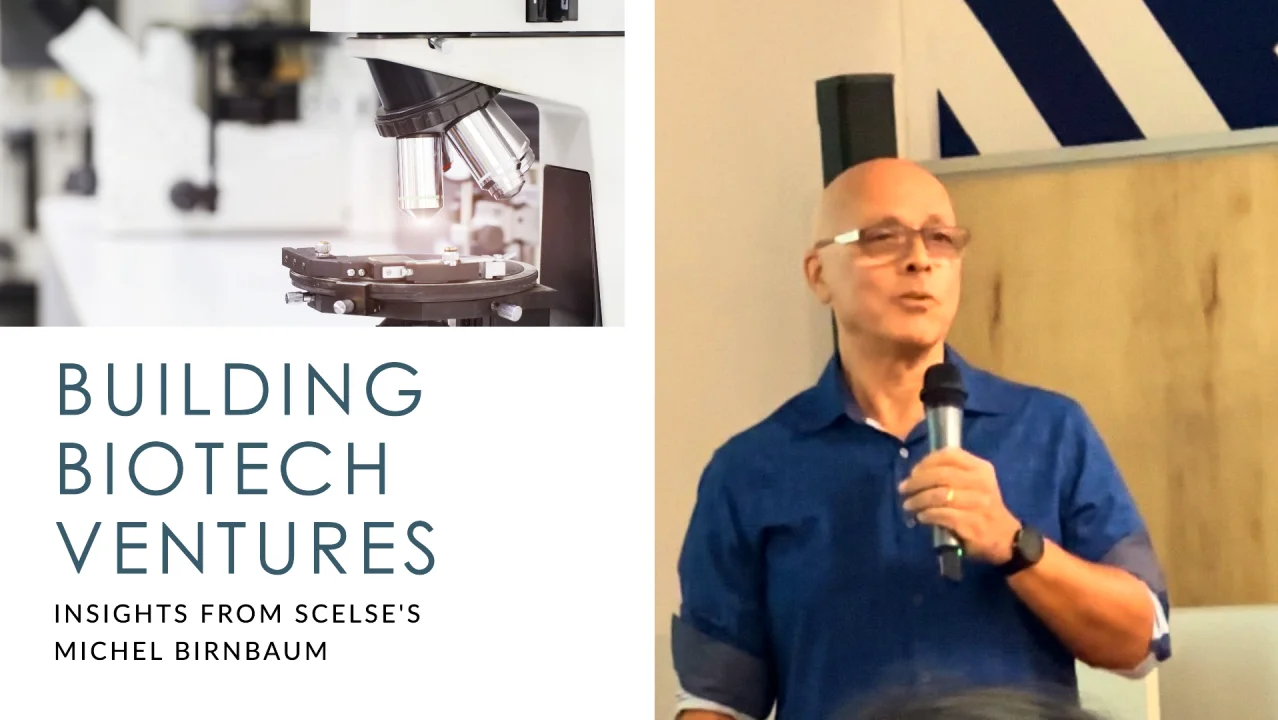
SCELSE’s Michel Birnbaum – a passionate expert in navigating the biotech venture sphere – is himself the CEO & co-founder of Mindsigns Health.
- Featured
- 21 Aug 2024
In the world of biotech startups, translating research into real-world solutions is like building a house—one that must withstand the storms of funding challenges, regulatory hurdles, and constant dialogue with end-users. Michel Birnbaum, SCELSE’s Director of Entrepreneurship & Research Translation, shares his insights on building a successful biotech venture, the importance of engaging with clinicians, and the personal fire driving his entrepreneurial journey. His experiences offer invaluable lessons for those aiming to lay a strong foundation for a thriving startup.
1. You said that research translation is like building a house. Could you elaborate, especially for our researchers, on how to build a house on rock-solid foundation? So that neither wind nor rain will topple the house.
Building a science-based company on sound scientific principles, testing, and validation is essential. However, this doesn’t guarantee success, as others are likely tackling the same problem with different approaches. This is why execution is crucial.
Many great ideas and scientific minds exist, but bringing those ideas from the lab to the market is key. Potential customers aren’t necessarily invested in why your product is better; they want to know if it significantly improves upon what they’re currently using. Ultimately, buyers need to say, “I have to have this” rather than “It would be nice to have this”.
2. You mentioned that the 3 key challenges in building a biotech startup are funding, talking to clinicians and hiring talent? Which of these three is the hardest and why?
Funding is undoubtedly the hardest part. Without a track record of providing investor exits in prior ventures or some name recognition, it’s tough to get in front of a good investor. Moreover, market conditions are beyond your control.
The healthcare market has been particularly challenging, with rapid shifts from early to late stages and inconsistent criteria for assessing companies. These moving goalposts vary across jurisdictions, likely due to VC portfolio structures, including the number of companies, investment timing, and potential exits.
3. You talk a lot about talking to the users – clinicians, procurement, buyers. How do you start the conversation with these people? And how often, if at all, do you get the cold shoulder? What would you say to our readers to encourage them?
There are various ways to build connections, none of them easy, and all require time to develop. First, do your homework to identify clinicians who like to try new things, have recognition in your target area, and primarily see patients.
Many clinicians focus more on research than on patient care, but for product-market fit, you need to talk to those who see patients and can provide insights on needs, workflows, and product acceptance – remember, “need to have” versus “nice to have”.
You may need to meet many clinicians before finding your “champion” – the insider who believes in your product and offers invaluable insights to help develop it. Keep in mind that your champion is likely not the final purchasing decision-maker. That economic buyer is the one you ultimately need to reach once your product is tested, validated, and proven useful. Rejection is part of the process and helps refine your pitch; while discouraging, it provides valuable lessons.
4. The regulatory landscape is cutthroat and nerve-wrecking. How can biotech startups navigate the regulatory landscape effectively? Any personal values/stories that would help motivate/encourage our readers?
Understanding where your product fits into the regulatory pathway is crucial.
It dictates the following:
· Testing and validation required,
· Necessary funding, and
· Potential need for partnerships to navigate the regulatory process.
While it’s challenging, regulators are usually helpful. For instance, the FDA offers the Q-Submission (QSub) program for medical devices, where agency representatives provide guidance before your submission. This involves an online, recorded meeting where you submit your questions in advance to ensure the right people are present. Stick to your questions during the call to avoid surprises. Do your homework and be specific in your inquiries. Contrary to popular belief, regulators are not your enemy.
5. What are some common pitfalls that startups face in the early stages of commercialisation, and how can they be avoided?
Finding that first entity willing to put a dollar on the table to buy your product is always difficult. The first thing you need to ensure and that comes back to some of the previous market comments is to make sure you have product-market fit.
Startups often spend too much time perfecting their product, but, as Reid Hoffman, co-founder of LinkedIn, said, “If you are not embarrassed by the first version of your product, you’ve launched too late!”
Understand regulatory requirements like ISO 13485 (quality management), which ensures your product is designed, developed, built, maintained, and evolves safely and efficiently. This certification reflects a company’s process maturity.
Ensure you have the right team and understand your financial resources. Many companies with good products fail because they run out of money. Develop financial scenarios (worst case, standard case, best case) and plan accordingly.
The last point would be to develop your first gen product based on the consensus you get from the market on what is needed. A lot of times, companies will run for that first order and change their products to try to get it. This is a sure way to run out of money and never develop that first product. Get the consensus and build it. If someone wants it to turn left when it turns right, then you can say it will be in the next version of the product; more often than not that someone will still purchase your product.
6. Researchers are smart people; and experts in their own right. What do you think is lacking in Singapore’s research landscape in propelling innovation forward more?
There is still a need to have a larger ecosystem of venture funders. Singapore is certainly getting there but we are not there yet.
Venture funding is a continuum not discrete steps and along that continuum there are different types of funders needed to push innovation along. The government has implemented good early-stage and early clinical stage funding programs. However, the transition to institutional venture funding is still lacking.
Additionally, there is a need to build a deeper base of executive talent to transform innovations into viable companies. Attracting the right talent, especially early on, remains a significant challenge in Singapore and the region.
7. What has sustained you thus far in running the marathon of the entrepreneurial route in Mindsigns Health™? Tell us more about the ‘fire in your belly’. How do you define success at this point in time?
The team at Mindsigns drives us forward. They may not be the founders, but they’re entrepreneurs in my eyes. They could work in other 9-5 jobs without the constant crises of startup life, but instead, they chose to follow our vision for Mindsigns Health™. This shared commitment keeps us going through the ups and downs, including the mental challenges.
I owe it to my team to ensure we execute our plans, provide financial stability, and support their career development. It’s daunting if you dwell on it, but that’s the “fire in the belly.” We push on, knowing something will always happen, though its significance is uncertain. Startups must move fast despite limited resources, and that drive gets me up in the morning.
In all my projects, I need to feel there’s something impactful. Success means getting clinicians to validate our work and integrate our products into clinical workflows, proving their usefulness. It’s a long journey in healthcare—more of a marathon than a sprint—so ensure you have the stamina to run the race! LOL.
8. What kind of sacrifices have you made personally in getting your own startup up and about since 2018?
I should probably let my wife and three boys answer that one! I’m usually all in although I have been working on trying to have a better balance. Sometimes it works and sometimes it doesn’t!
But there has been a lot of sacrifices across the board. As far as I’m concerned, it cannot be money that’s driving you because that will lose its shine fairly quickly. It’s back to the feeling that you are working on something that can make a difference and be impactful. This applies for healthcare as it is a long stretch to get to commercialisation as opposed to a lot of other sectors.
9. Based on your own experiences, how do you personally help SCELSE researchers/startups/collaborators push their startups forward? Do researchers make appointments with you for one-to-one discussion/advice etc?
I enjoy working with SCELSE researchers, especially the younger ones, who are just starting to ignite their passion. Not everyone is suited to start a company, even if they have innovative ideas, and that’s fine.
It’s important to understand your personal agenda—where you want to be in five to ten years, your career and personal aspirations, and whether they align with the instability of startup life.
I always try to give the practical viewpoint and not the glamorous one that some people unfortunately portray.
We brainstorm about where the innovation fits, based on what we think are the needs and gaps, and then work backwards to figure out the work to be done to get there. This is always a huge discovery process for the researcher.
It’s one thing to have an innovation quite another to translate that and develop something with some reasonable time horizon to achieve certain milestone(s).
I also make sure that a lot of the thinking and reasoning comes from them and I just facilitate by asking questions or making certain statements. After all, it is their innovation, maybe eventually their company. They need to do the thinking in terms of what they want to achieve and the type of company they want to create and grow with luck.
My colleague, Dr Maria Yung, Assistant Director for Business Development & Strategic Partnerships, and I are very flexible because we know academia can be demanding. We spend as much time as needed to help researchers make decisions, whether it takes one meeting or several months. It’s always a marathon! LOL.
10. If you could do it all over again, would you? Or would you do anything differently?
Sometimes, actually quite often, I think I should have started this work earlier. But when I reflect, I realize the people I’ve met along the way, who’ve generously shared their time, advice, and occasional tough love, have provided the foundation for what I do now. I’ve held many positions across various industries, from junior to senior levels, all contributing to who I am today. My father used to say, “There are no stupid jobs, only stupid people—you will learn something in every job.”
I wouldn’t change much, except to spend more time with my family, which I hope to do more of now.
